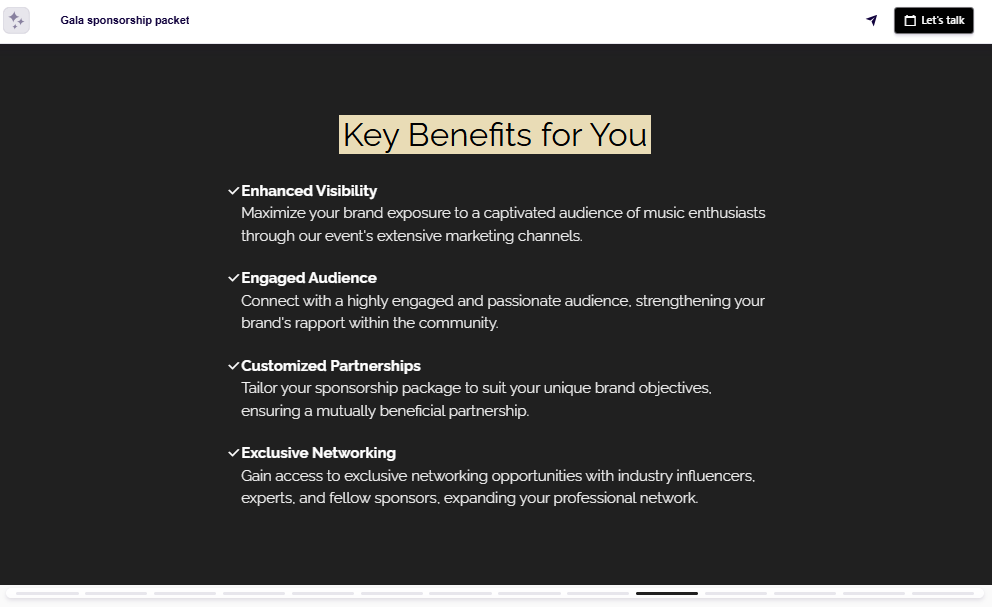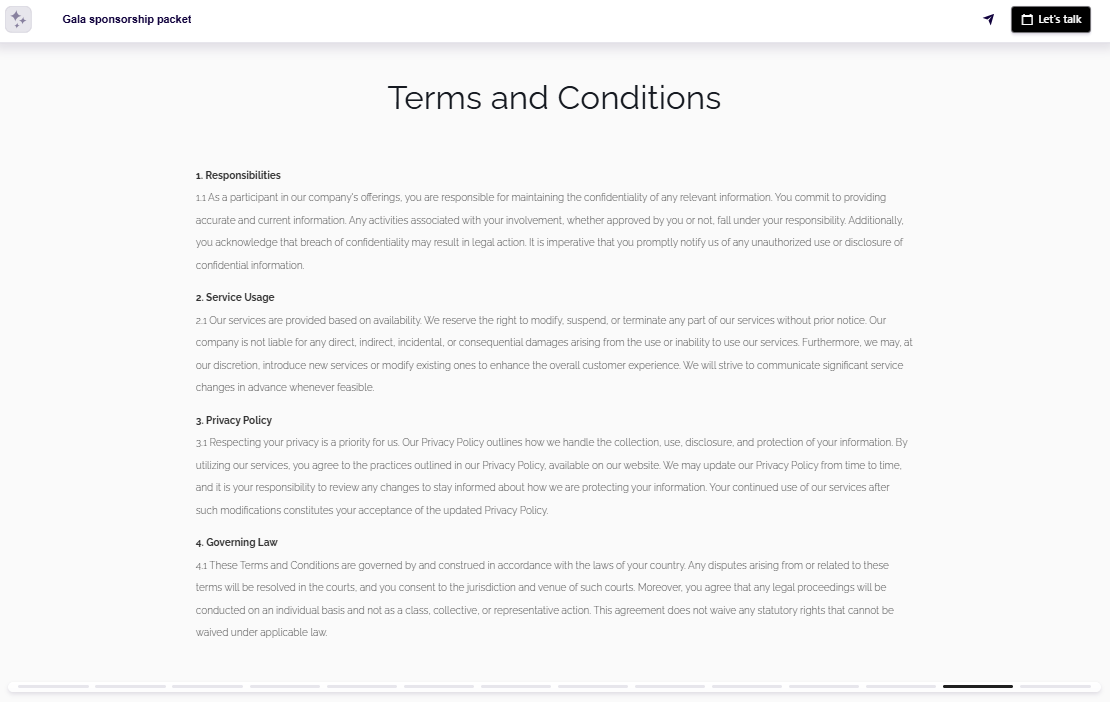How to Make a Nonprofit Sponsorship Packet (+Examples)
Unlock funding success with this guide on how to make a nonprofit sponsorship packet. Use our customizable sponsorship packet examples as your template.


Unlock funding success with this guide on how to make a nonprofit sponsorship packet. Use our customizable sponsorship packet examples as your template.
Short answer
A nonprofit sponsorship packet is a detailed proposal that highlights your organization’s mission, goals, and what sponsors stand to gain. It’s designed to attract support by showing how a partnership can create mutual benefits and help both sides achieve shared objectives.
Stop losing opportunities to ineffective presentations.
Your new amazing deck is one click away!



















